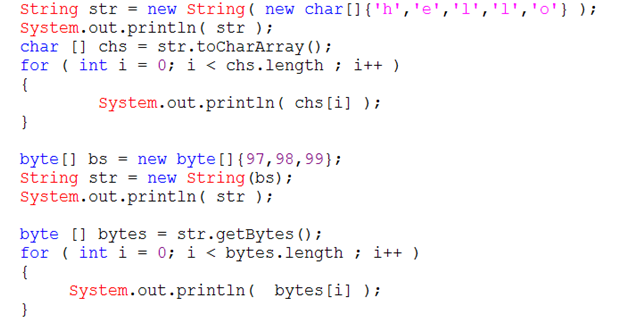-暑假学习第十五天--
一.获取方法
int length() 获取字符串的长度
char charAt(int index) 获取特定位置的字符 (角标越界)
int indexOf(String str) 获取特定字符的位置(overload)
int lastIndexOf(int ch) 获取最后一个字符的位置

二.判断方法
boolean endsWith(String str) 是否以指定字符结束
boolean isEmpty()是否长度为0 如:“” null V1.6
boolean contains(CharSequences) 是否包含指定序列 应用:搜索
boolean equals(Object anObject) 是否相等
boolean equalsIgnoreCase(String anotherString) 忽略大小写是否相等

三.转换方法
String(char[] value) 将字符数组转换为字符串
String(char[] value, int offset, int count)
Static String valueOf(char[] data)
static String valueOf(char[] data, int offset, int count)
char[] toCharArray() 将字符串转换为字符数组

四.其他方法
String replace(char oldChar, char newChar) 替换
String[] split(String regex) 切割
String substring(int beginIndex)
String substring(int beginIndex, int endIndex)截取字串
String toUpperCase() 转大写
String toLowerCase() 转小写
String trim() 去除空格
eg: 去除字符串两边空格的函数。
public class Demo1 { // 定义一个祛除字符串两边空格的函数 public static String trim( String str ){ // 0、定义求字串需要的起始索引变量 int start = 0; int end = str.length()-1; // 1. for循环遍历字符串对象的每一个字符 for (int i = 0; i<str.length() ; i++ ) { if ( str.charAt(i) == ' ' ) { start++; }else{ break; } } System.out.println( start ); for (; end<str.length() && end >= 0; ) { if ( str.charAt(end) == ' ' ) { end--; }else{ break; } } System.out.println( end ); // 2. 求子串 if( start < end ){ return str.substring( start , (end+1) ); }else{ return "_"; }